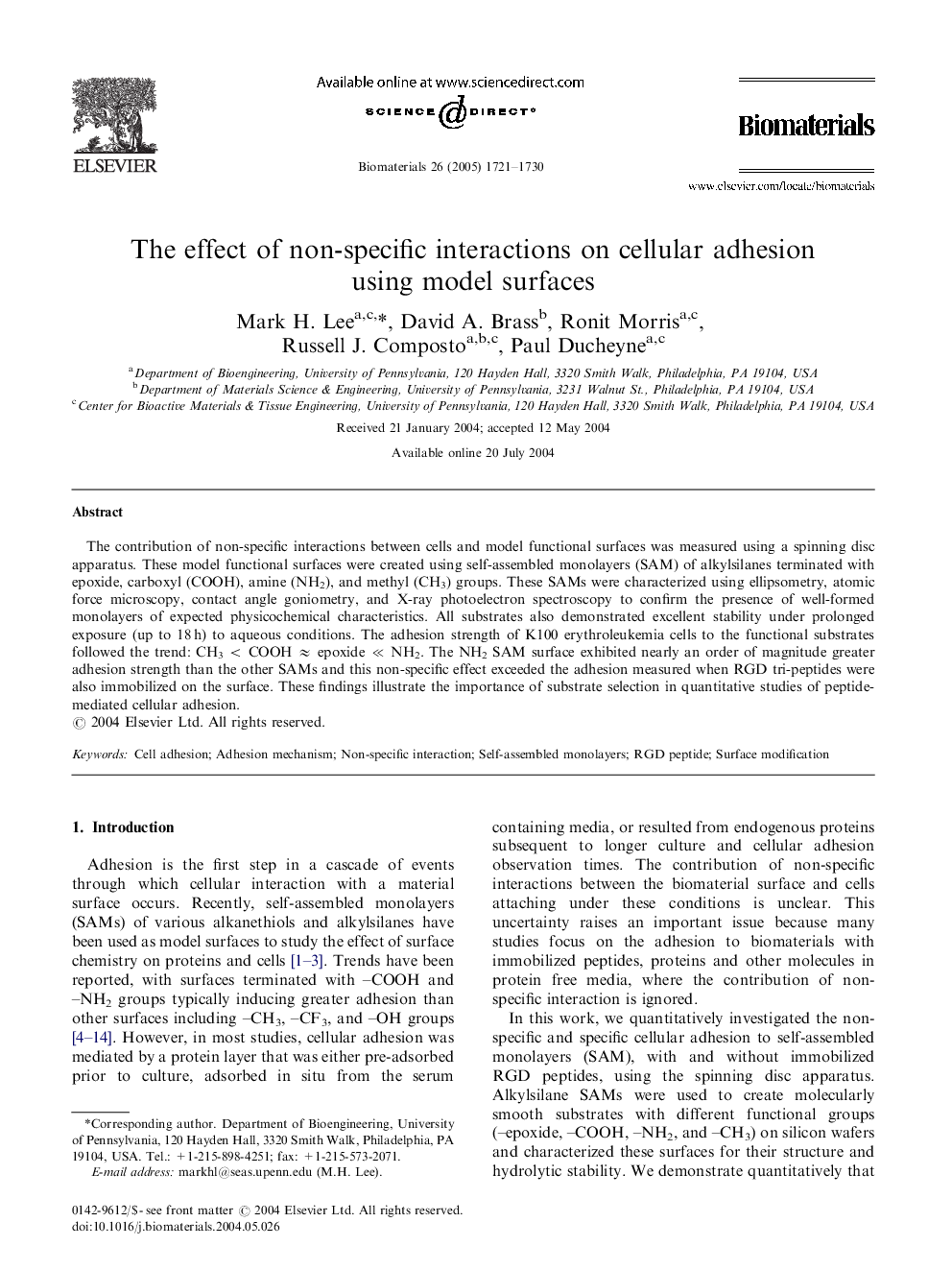| Article ID | Journal | Published Year | Pages | File Type |
|---|---|---|---|---|
| 12364 | Biomaterials | 2005 | 10 Pages |
The contribution of non-specific interactions between cells and model functional surfaces was measured using a spinning disc apparatus. These model functional surfaces were created using self-assembled monolayers (SAM) of alkylsilanes terminated with epoxide, carboxyl (COOH), amine (NH2), and methyl (CH3) groups. These SAMs were characterized using ellipsometry, atomic force microscopy, contact angle goniometry, and X-ray photoelectron spectroscopy to confirm the presence of well-formed monolayers of expected physicochemical characteristics. All substrates also demonstrated excellent stability under prolonged exposure (up to 18 h) to aqueous conditions. The adhesion strength of K100 erythroleukemia cells to the functional substrates followed the trend: CH3 < COOH ≈ epoxide ≪ NH2. The NH2 SAM surface exhibited nearly an order of magnitude greater adhesion strength than the other SAMs and this non-specific effect exceeded the adhesion measured when RGD tri-peptides were also immobilized on the surface. These findings illustrate the importance of substrate selection in quantitative studies of peptide-mediated cellular adhesion.
